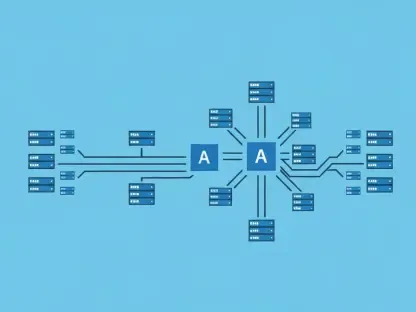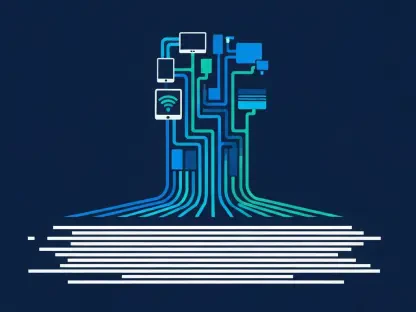Artificial intelligence (AI) is revolutionizing many fields, and software architecture is no exception. As AI continues to evolve, it both impacts and integrates into the practice of software architecture in unprecedented ways. This article aims to explore AI’s influence, the challenges it poses, and the opportunities it creates for modern software architects.
The Impact of AI on Software Architecture Practice
Core Tasks Remain Unchanged
Despite the rapid advancements in AI, the core responsibilities of software architects have remained largely unchanged over the years. Software architects are still fundamentally tasked with understanding the deployment context of a system, evaluating engineering trade-offs, and gathering crucial information to guide the design process. While AI can assist in enhancing analysis tools and automation, the nuanced decision-making and contextual understanding required by architects have not been fully supplanted by AI technologies. This reality underscores the enduring importance of human expertise in software architecture, even as AI becomes a more integral part of the process.
AI tools, while sophisticated and capable of performing various tasks, primarily serve to augment rather than replace the expertise of software architects. For instance, AI-driven analytics can provide insights into system performance metrics and potential bottlenecks. Similarly, AI-powered design assistants can suggest architectural patterns based on previous successful projects, thereby streamlining certain aspects of the design process. However, these tools do not possess the deep contextual awareness or the ability to understand the specific nuances of each project, which are critical to making informed architectural decisions. Therefore, AI enhances the efficiency of tasks but does not eliminate the need for human judgment and experience.
Enhanced Tools and Automation
The advent of AI tools has introduced a new level of automation and enhancement into the realm of software architecture. Architects can now leverage AI capabilities for tasks such as predictive modeling, pattern recognition, and the automation of repetitive activities, which significantly boosts productivity and allows for more informed decision-making. For example, AI-driven predictive analytics can offer valuable insights into potential system performance issues, enabling architects to proactively address bottlenecks and optimize designs for better efficiency and scalability. These advanced tools allow architects to focus more on strategic and creative aspects of their work by automating routine tasks.
However, the integration of AI tools into software architecture practice also brings various challenges. Despite their advanced capabilities, AI tools require careful supervision and adjustment to ensure their outputs align with the project’s objectives and context. Misalignment between AI tool recommendations and actual project requirements can lead to suboptimal designs and inefficiencies. Therefore, while AI tools can significantly enhance the architectural process, their effective use demands a deep understanding of both the technology and the specific needs of each project. This interplay between human expertise and AI capabilities underscores the collaborative nature of modern software architecture.
AI’s Influence on New Software Applications
New Types of Applications
AI is not only enhancing existing software architecture practices but also driving the creation of entirely new categories of software applications. These new applications leverage sophisticated AI models to perform tasks that were previously infeasible or too complex for traditional software. Examples include predictive systems for supply chains, which optimize product flow based on real-time data, and automated summarization tools that can distill lengthy legal documents into concise summaries. Such innovations represent a significant shift in how software can solve complex problems, offering new opportunities for efficiency and effectiveness in various domains.
The introduction of these new types of AI-driven applications presents additional layers of complexity that software architects must navigate. Traditional design paradigms may not adequately address the unique requirements and behaviors of AI components. This necessitates the development of new design methodologies and frameworks that can effectively integrate AI models into the overall architecture. Additionally, architects must consider the interoperability of AI components with other system elements, ensuring seamless integration and coherent operation. These challenges highlight the evolving role of software architects as they adapt to the demands of AI-enhanced systems, requiring continuous learning and adaptation to new technologies and methodologies.
Reliability and Correctness Challenges
Ensuring the reliability and correctness of AI-generated outputs remains one of the most significant challenges for software architects. Unlike traditional software systems, which follow predetermined algorithms and logic, AI models operate on probabilistic approaches. This unpredictability can make AI components difficult to validate and verify, posing risks to the overall reliability of the system. Architects must therefore develop robust methods for testing and validating AI models, ensuring they function as intended and deliver accurate and reliable results.
To address these reliability and correctness challenges, software architects often employ a combination of traditional testing methods and new, AI-specific validation techniques. This can include rigorous testing with diverse datasets to evaluate the AI model’s performance under various conditions. Additionally, continuous monitoring and updating of AI models are necessary to maintain their effectiveness over time, as these models can degrade without regular maintenance. Establishing clear metrics and benchmarks for AI performance is also crucial, allowing architects to measure and ensure the consistency and dependability of AI components within the broader system architecture. These efforts are essential for maintaining the integrity and trustworthiness of AI-driven applications.
Responsibility and Ethical Use of AI
Designing Secure Systems with Guardrails
The responsibility of deploying AI systems ethically and responsibly falls heavily on the shoulders of software architects. This involves designing systems with built-in safeguards, often referred to as guardrails, to prevent AI from generating harmful or inappropriate responses. Establishing these guardrails requires a comprehensive understanding of acceptable use cases, setting clear boundaries for AI decision-making, and incorporating human oversight into critical processes. By implementing these measures, architects can protect against potential negative consequences of AI deployment, ensuring the technology is used in a manner that aligns with ethical standards and societal expectations.
The design of secure systems with effective guardrails extends beyond technical considerations to include ethical and societal implications. Architects must carefully assess the potential impacts of AI systems on users and broader communities, considering factors such as privacy, fairness, and accountability. This holistic approach to system design helps to address concerns related to bias, discrimination, and unintended negative outcomes. By fostering collaboration with stakeholders, including ethicists, policymakers, and end-users, architects can develop AI systems that not only perform effectively but also uphold ethical principles and contribute positively to society.
Ethical Considerations and Human Oversight
The ethical deployment of AI technologies requires a delicate balance between automation and human judgment. While AI-driven automation can enhance productivity and efficiency, it is crucial not to undermine the critical role of human oversight. Effective human-machine interfaces play a pivotal role in ensuring that AI systems augment rather than replace human capabilities. Architects must design these interfaces to facilitate seamless interaction between humans and AI, enabling users to leverage the strengths of both while maintaining overall control and accountability. This collaborative approach fosters trust and ensures that AI systems serve to enhance human potential rather than diminish it.
The integration of human oversight is particularly important in contexts where AI systems make decisions that significantly impact individuals or society. For example, in healthcare, legal, and financial applications, human experts must have the ability to review, interpret, and intervene in AI-generated decisions. By incorporating human oversight into the design process, architects can mitigate risks associated with over-reliance on AI and ensure that the technology is used responsibly. This approach not only enhances the ethical use of AI but also contributes to the development of more robust and trustworthy systems that effectively address complex real-world challenges.
Challenges in AI Security and Performance
Adapting Conventional Security Principles
Security remains a paramount concern in the design and deployment of AI-driven applications. While conventional security principles, such as designing security from the ground up, continue to be essential, they must be adapted to address the unique threats posed by AI technologies. These threats include adversarial attacks, where malicious inputs are crafted to deceive AI models, and model inversion attacks, where sensitive data can be extracted from AI models. Understanding and mitigating these advanced threats require a deep understanding of both AI and traditional cybersecurity principles, necessitating a holistic and integrated approach to system security.
To effectively address these security challenges, architects must employ a combination of traditional security measures and innovative techniques tailored specifically for AI. This includes implementing robust encryption methods to protect data at rest and in transit, as well as developing techniques for detecting and mitigating adversarial attacks. Additionally, continuous monitoring and updating of AI models are crucial to ensuring their security over time. By adopting a proactive and adaptive security strategy, architects can safeguard AI-driven applications against evolving threats, maintaining the integrity and confidentiality of sensitive data and ensuring the overall resilience of the system.
Ensuring Optimal System Performance
Assessing and ensuring the performance of AI-driven systems presents unique challenges that differ from those of traditional software applications. Unlike conventional systems, AI models require continuous monitoring and updating to maintain their effectiveness and adapt to changing conditions. Architects must establish comprehensive metrics and frameworks for evaluating system performance, ensuring that AI components operate within acceptable parameters and contribute positively to the overall system. This involves not only measuring the accuracy and efficiency of AI models but also monitoring their behavior and interactions with other system elements.
Effective performance management of AI-driven systems also requires a focus on scalability and robustness. As AI applications often involve large datasets and complex computations, architects must design systems that can handle significant processing loads and adapt to varying demands. This includes optimizing resource allocation, implementing efficient algorithms, and ensuring seamless integration of AI components with the broader system architecture. By addressing these performance challenges, architects can develop AI-driven applications that deliver reliable and consistent results, meeting user expectations and supporting the achievement of strategic objectives.
Guarding Against Naive and Harmful Uses of AI
Focus on Practical Business Objectives
In the rapidly evolving landscape of AI technologies, software architects must remain focused on practical business objectives to avoid the pitfalls of implementing AI for trend-following. Rather than adopting AI solutions solely for their novelty, architects should critically evaluate the potential benefits and long-term implications of AI deployment. This involves thoroughly vetting use cases to ensure they align with strategic goals and provide tangible value to the organization. By focusing on real business objectives, architects can develop AI-driven systems that deliver meaningful outcomes and support sustainable growth.
A key aspect of this practical approach is considering the cost-benefit analysis of AI adoption. Architects must weigh the potential advantages of AI solutions against the resources required for their implementation and maintenance. This includes assessing the financial costs, technical feasibility, and potential risks associated with AI technologies. By taking a balanced and informed approach, architects can make strategic decisions that maximize the return on investment in AI, ensuring that the technology serves as a valuable asset rather than a costly distraction.
Hybrid Approaches and Human-AI Collaboration
Artificial intelligence (AI) is drastically transforming a multitude of industries, and the realm of software architecture is no exception. As AI continues its rapid advancement, it leaves a significant imprint on software architecture, infiltrating and reshaping the way architects work and design complex systems. This dynamic interaction between AI and software architecture is leading to a myriad of both challenges and opportunities for modern professionals in the field.
The integration of AI into software architecture means architects must now contend with new sets of requirements and paradigms. AI-driven systems demand a shift in traditional design processes, necessitating a more flexible, adaptive, and data-centric approach. This shift also brings about challenges, such as the need for new skill sets and the task of ensuring ethical considerations in AI deployment.
However, the opportunities created are equally compelling. AI can optimize performance, predict system behavior, and even automate some aspects of the architectural process. Moreover, it can facilitate the creation of more intelligent, scalable, and responsive systems. In summary, AI is not just a tool but an evolving partner in the practice of software architecture, presenting both significant challenges and exciting prospects for the future.









